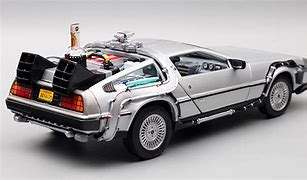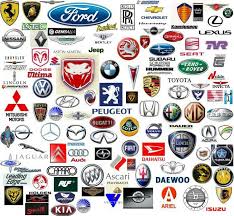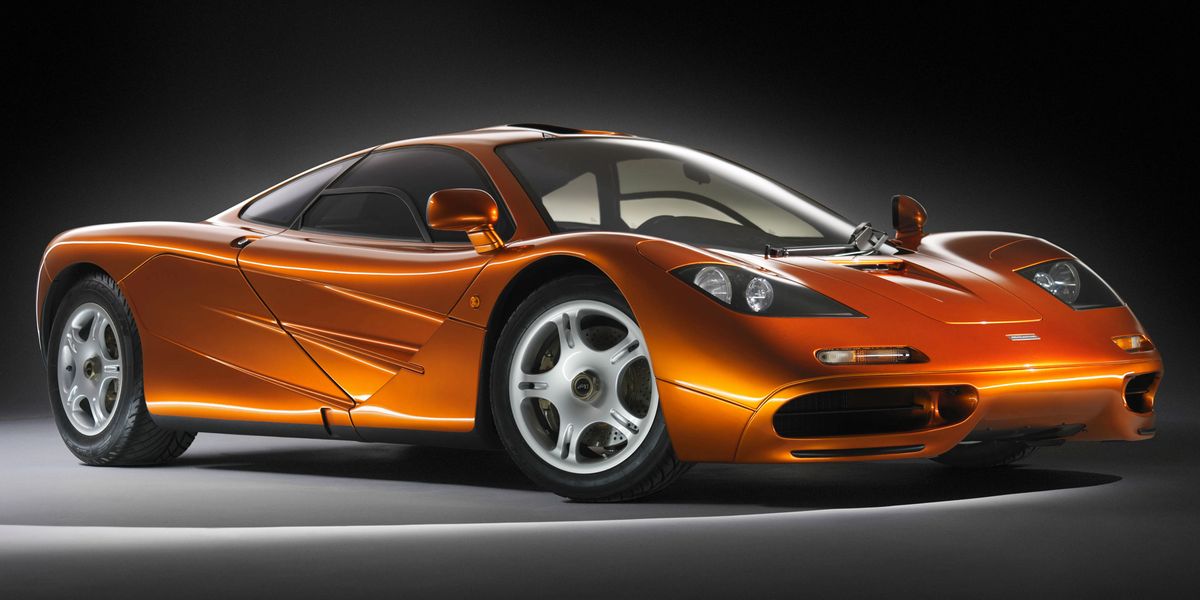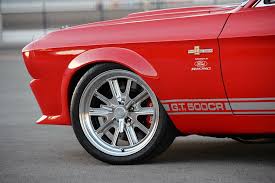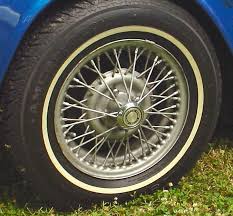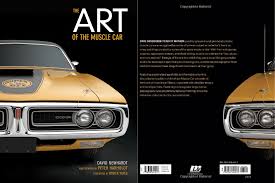

Ford GT 5.4 V8
Engine: Naturally Aspirated Petrol | 5409cc 32v V8
Top Speed: 190 mph
0-60mph: 3.80 seconds

Audi A5 RS5 2.9 V6 Turbo Coupe
Engine: Turbo Petrol | 2894cc 24v V6
Top Speed: 249.4 kph
0-100kph: 3.8 seconds
The car manufacturer Seat has made an important impact on the automotive world. In this article we will give a brief but detailed history of the Seat marque. We will look at the origins of Seat looking at who, why, where and when Seat was founded. We'll look at the design of the iconic Seat logo and what are some the more significant Seat models. We'll take a glance at what racing history the Seat has and who some of the most important people have been in the history of Seat over the years.
Seat, the Spanish car manufacturer, was founded on May 9, 1950. The company's formation was a result of a collaboration between the Spanish government and Fiat, the renowned Italian car manufacturer. The establishment of Seat was driven by a combination of factors, including the need for economic development, the growing demand for automobiles in Spain, and the desire to establish a domestic car industry.
The foundation of Seat took place in the city of Barcelona, Spain. The location was strategic, as Barcelona was a hub of industrial activity and possessed the necessary infrastructure and skilled labor force to support the automotive industry. The Spanish government, aiming to promote economic growth and reduce dependence on foreign car imports, recognized the potential of establishing a domestic car manufacturer in Barcelona.
The collaboration between the Spanish government and Fiat played a crucial role in Seat's foundation. Fiat, one of the largest car manufacturers in Europe, brought its technical expertise, production know-how, and access to advanced technologies to the partnership. The Spanish government, on the other hand, provided the necessary financial support, regulatory framework, and industrial facilities to facilitate the establishment of Seat.
The decision to create Seat was driven by several key factors. First and foremost was the aim to meet the increasing demand for automobiles in Spain. As the country experienced economic growth and rising standards of living in the post-war period, there was a growing desire among the population for personal mobility. The establishment of Seat allowed Spain to produce cars domestically, making them more accessible and affordable for the Spanish market.
In addition to meeting domestic demand, Seat was also founded with the intention of fostering industrial development and generating employment opportunities in Spain. The establishment of a car manufacturing industry was seen as a means to create jobs, promote technological advancement, and stimulate economic growth. Seat became a symbol of Spain's industrial progress and contributed significantly to the country's economic development.
Moreover, the foundation of Seat was part of a larger strategic effort by the Spanish government to reduce dependence on foreign imports and build a self-sufficient automotive industry. By partnering with Fiat, Seat gained access to Fiat's technology and expertise, allowing the Spanish company to develop its own cars and become a competitive player in the European market. The collaboration with Fiat provided Seat with the necessary resources to establish a strong manufacturing base and develop its own models tailored to the Spanish market.
Since its foundation, Seat has evolved into a well-established car manufacturer with a rich history and a strong presence in the automotive industry. The brand has produced a wide range of models, combining innovative design, performance, and affordability. Seat's success can be attributed to its foundation on the principles of meeting domestic demand, promoting economic development, and reducing dependence on foreign imports. Today, Seat continues to thrive as a Spanish automotive brand, representing the spirit of Spanish design, engineering excellence, and innovation.
The logo of Seat, the Spanish car manufacturer, has undergone several transformations throughout its history, reflecting the brand's evolution and its commitment to modernity and style. The Seat logo has played a crucial role in shaping the brand's identity and communicating its values to the world.
The original Seat logo, introduced in 1950, featured the word "Seat" in a stylized cursive script. This logo symbolized the brand's establishment and marked its entry into the automotive industry. While simple in design, the logo represented Seat's commitment to elegance and sophistication.
In the 1970s, Seat unveiled a new logo that showcased a bold and distinctive design. The logo featured a circular emblem with the word "Seat" in capital letters inside the circle. The emblem was surrounded by a rectangular shape that resembled a gear or a steering wheel. This logo reflected Seat's embrace of modernity and its aspiration to become a prominent player in the international automotive market.
In the late 1990s, Seat introduced a significant update to its logo, aligning it with the brand's renewed direction and visual identity. The new logo featured the word "Seat" in lowercase letters, with a stylized "e" characterized by a rounded shape. The logo embodied a more dynamic and youthful image, capturing Seat's commitment to modern design and innovation.
In recent years, Seat has made further refinements to its logo, aiming to convey a sense of simplicity and modernity. The current logo retains the lowercase lettering and the rounded "e" but introduces a cleaner and more streamlined design. The logo is typically presented in silver or chrome, adding a touch of sophistication and highlighting Seat's focus on quality and precision.
Throughout its history, the Seat logo has evolved to reflect the brand's values and its commitment to modern design. From the initial cursive script to the bold circular emblem and the current sleek and streamlined design, each iteration of the logo has contributed to Seat's visual identity and its reputation as a contemporary and stylish automotive brand.
Seat has produced a range of significant models throughout its history, showcasing a blend of style, performance, and innovation. With a focus on higher performance, Seat has created vehicles that cater to driving enthusiasts seeking exhilarating experiences on the road. From the early years to the present day, Seat has consistently delivered models that combine power, precision, and dynamic design.
One of Seat's iconic models from its early history is the Seat 1430 Sport. Introduced in the 1970s, the 1430 Sport was a sportier version of the popular Seat 1430 sedan. It featured a sleek and aerodynamic design, enhanced suspension, and a more powerful engine, delivering a thrilling driving experience. The 1430 Sport's performance capabilities and attractive styling made it a standout model in Seat's lineup during that era.
In the 1990s, Seat introduced the Ibiza Cupra as part of its high-performance range. The Ibiza Cupra combined sporty aesthetics with impressive performance. Equipped with a turbocharged engine, sport-tuned suspension, and aggressive body styling, the Ibiza Cupra became a popular choice among enthusiasts seeking a compact and spirited driving experience. Its nimble handling and responsive powertrain solidified its place in Seat's performance-oriented lineup.
Seat's commitment to higher performance continued into the 2000s with the introduction of the Seat Leon Cupra R. As the range-topping variant of the Leon lineup, the Cupra R boasted a powerful turbocharged engine, upgraded brakes, and enhanced aerodynamics. The Cupra R delivered exhilarating acceleration and precise handling, making it a favorite among hot hatch enthusiasts. With its striking design and potent performance, the Cupra R represented Seat's dedication to creating high-performance vehicles.
In recent years, Seat has further expanded its performance offerings with the introduction of the Leon Cupra. Available in different power outputs, the Leon Cupra features advanced technology, including adaptive suspension, progressive steering, and a range of driver assistance systems. The Cupra variant of the Leon combines sleek aesthetics, refined interiors, and impressive performance to deliver an all-around exhilarating driving experience.
Seat's commitment to higher performance is also evident in its sub-brand, Cupra. Established in 2018, Cupra operates as a standalone brand within the Seat Group, focusing on creating high-performance vehicles with a distinct identity. Cupra models, such as the Cupra Ateca and the Cupra Formentor, embody Seat's passion for performance and feature advanced engineering, sporty design cues, and potent powertrains.
Seat's most significant models with a focus on higher performance span its history, showcasing the brand's evolution and commitment to delivering thrilling driving experiences. From the early days of the 1430 Sport to the modern-day Cupra models, Seat has consistently pushed the boundaries of performance and style, catering to enthusiasts who seek a blend of excitement and practicality in their vehicles.
In addition to its significant models, Seat owes much of its success to the talented individuals who have contributed to the brand's legacy. These individuals, including visionary leaders, innovative designers, and skilled engineers, have played a crucial role in shaping Seat into the respected car manufacturer it is today.
One of the pivotal figures in Seat's history is Juan Miguel Anto�anzas, who served as the CEO of Seat during a critical period of the brand's development. Under his leadership, Seat underwent a transformation, revitalizing the brand's image and positioning it for international success. Anto�anzas played a key role in expanding Seat's market presence beyond Spain, spearheading initiatives to strengthen the brand's global footprint and enhance its competitiveness.
The design department at Seat has also been instrumental in the brand's success. Luc Donckerwolke, a renowned automobile designer, made significant contributions to Seat's lineup during his tenure as the head of design. Donckerwolke's creative vision and meticulous attention to detail shaped the aesthetic identity of Seat's models, infusing them with a distinctive and dynamic design language that resonated with consumers. His influence can be seen in the striking lines and sporty proportions of Seat's vehicles, contributing to the brand's visual appeal.
Another significant individual associated with Seat is Andreas Schleef, an accomplished engineer and the head of Seat's technical development department. Schleef's expertise and leadership were instrumental in the development of Seat's modern models, focusing on enhancing performance, safety, and sustainability. Under his guidance, Seat made significant strides in the areas of engine technology, vehicle dynamics, and advanced driver assistance systems, ensuring that Seat's vehicles deliver exceptional performance and meet the evolving needs of customers.
Seat's success is also attributed to the talented workforce behind the scenes, including skilled technicians, craftsmen, and professionals who contribute to the manufacturing process. These individuals bring their expertise and dedication to every aspect of Seat's production, ensuring that each vehicle meets the brand's high standards of quality and craftsmanship.
Furthermore, Seat's commitment to innovation and technological advancement is reflected in its collaborations with notable figures in the automotive industry. For instance, the partnership between Seat and Cupra, its performance sub-brand, has been led by Wayne Griffiths. As the CEO of Cupra, Griffiths has played a crucial role in developing and promoting the brand as a distinct entity within the Seat Group. His leadership has been pivotal in positioning Cupra as a dynamic and performance-oriented brand, driving its success in the market.
These significant individuals, from CEOs and designers to engineers and leaders, have collectively shaped Seat's legacy and contributed to its position as a respected car manufacturer. Their expertise, vision, and dedication have propelled Seat forward, driving innovation, enhancing performance, and delivering vehicles that captivate drivers around the world.
Seat has a rich racing history that spans several decades and showcases the brand's commitment to motorsports and performance excellence. Seat's involvement in various racing disciplines, from touring car championships to endurance racing, has not only provided thrilling competition but also served as a platform to demonstrate the brand's engineering capabilities and promote its vehicles to a wider audience.
One of the notable highlights in Seat's racing history is its participation in touring car championships. In the 1970s and 1980s, Seat competed in the European Touring Car Championship (ETCC) with models such as the Seat 1430 and the Seat 124. The brand's touring cars showcased their speed and reliability, challenging formidable opponents on iconic tracks throughout Europe. Seat's success in touring car racing garnered attention and solidified its reputation for producing competitive vehicles.
Seat's commitment to touring car racing continued in the 2000s with the introduction of the Seat Leon Supercopa, a one-make racing series featuring specially prepared Seat Leon Cupra race cars. The Supercopa series provided aspiring drivers with an opportunity to compete in a high-level racing championship using identical machinery. The intense competition and close racing in the Supercopa championship highlighted the performance capabilities of Seat's vehicles and demonstrated the brand's commitment to grassroots motorsports.
Furthermore, Seat's involvement in endurance racing has been a significant chapter in its racing history. The brand made its mark in endurance events, particularly in the grueling 24 Hours of Spa-Francorchamps. Seat fielded its race-prepared Seat Leon cars, often in collaboration with partner teams, to tackle the demanding challenges of endurance racing. The endurance events not only tested the durability and performance of Seat's vehicles but also provided an opportunity to showcase the brand's engineering prowess in prolonged, high-stress racing conditions.
In recent years, Seat has embraced electric racing by participating in the ETCR (Electric Touring Car Racing) series. Seat's involvement in the ETCR championship demonstrates the brand's commitment to sustainable racing and the development of electric vehicles. By competing in this forward-thinking racing series, Seat aims to showcase the performance capabilities of electric powertrains and contribute to the advancement of sustainable mobility.
Seat's racing history is not limited to professional championships. The brand has also engaged with motorsports enthusiasts through initiatives such as the Seat Cupra Xperience. This program offers customers the opportunity to experience the thrill of driving Seat Cupra models on famous racetracks, further connecting Seat with its fan base and fostering a sense of community among racing enthusiasts.
Seat's involvement in racing has not only showcased the brand's performance capabilities but also allowed it to refine its road-going vehicles. The lessons learned on the racetrack have been invaluable in enhancing Seat's production models, ensuring that they deliver outstanding performance, handling, and driving dynamics to customers.
Seat's racing history is a testament to the brand's commitment to motorsports and performance excellence. From touring car championships to endurance racing and electric racing, Seat has demonstrated its passion for competition, innovation, and pushing the boundaries of automotive performance. The brand's involvement in racing has not only shaped its image but also contributed to the development of high-performance road cars that capture the spirit of racing for enthusiasts around the world.
The Spanish car manufacturer, is a symbol of performance, style, and innovation. With a rich racing heritage, Seat has established itself as a brand that delivers thrilling driving experiences both on and off the racetrack. From touring car championships to endurance racing, Seat has showcased its engineering prowess and commitment to motorsports. The brand's lineup features a range of models that combine power, precision, and dynamic design, catering to the needs of driving enthusiasts.
Seat's success is attributed not only to its significant models but also to the talented individuals who have shaped the brand. Visionary leaders, innovative designers, and skilled engineers have contributed to Seat's legacy, driving the brand's growth and success. Seat's racing history has further demonstrated its dedication to performance excellence, with participation in various racing disciplines and initiatives to engage with motorsports enthusiasts.
With its strong racing heritage, commitment to innovation, and a lineup of high-performance models, Seat continues to captivate drivers around the world. The brand's focus on delivering thrilling driving experiences, combined with its dedication to style and technology, has solidified Seat's position as a respected car manufacturer. Whether on the racetrack or the road, Seat embodies the spirit of performance, offering enthusiasts a unique blend of excitement, style, and driving pleasure.

Ford GT 5.4 V8
Engine: Naturally Aspirated Petrol | 5409cc 32v V8
Top Speed: 190 mph
0-60mph: 3.80 seconds

Audi A5 RS5 2.9 V6 Turbo Coupe
Engine: Turbo Petrol | 2894cc 24v V6
Top Speed: 249.4 kph
0-100kph: 3.8 seconds

